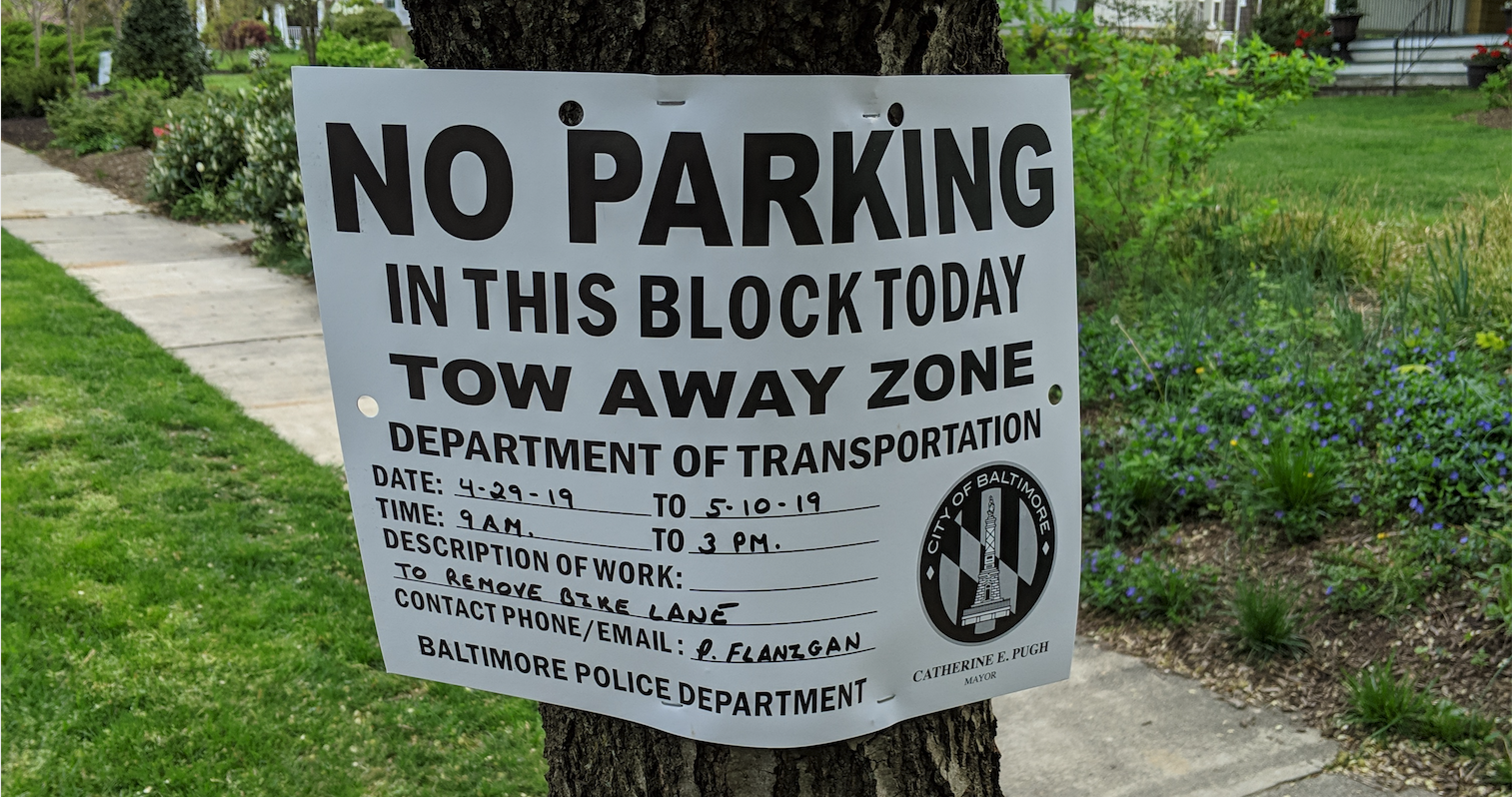Baltimore City Department of Transportation has decided to move forward on a directive from an absentee mayor to tear out the Roland Avenue protected bike lane and revert it back to the original design. In the Mayor’s Bicycle Advisory Commission meeting today, we learned that this phase of removal will cost at least $140,000.00. Mayor Pugh’s directive also included the placement of green paint on an indefinite timeline that will extend down University Parkway, adding significantly to projected costs.
At today’s meeting, we publicly confirmed with Department of Transportation staff that traffic volumes and speeds on Roland Avenue require a separated facility based on DOT’s own adopted guidance and national best practice documents codified into city law under the Baltimore Complete Streets ordinance.
For four years, we have shown up to meetings. We helped organize neighbors who believe that people of all ages and abilities should be able to bike on that stretch of road. We have received verbal threats. It has put Bikemore in an impossible position of going head to head with some of the most influential residents in the city. It has misdirected City resources. It created a contentious divide among neighbors. This project has caused unnecessary harm.
It is a failure of leadership when something as relatively insignificant as paint on a street receives this amount of resources and exposure. There are challenges facing this city that eclipse the needs on this one mile stretch of road, and it is our opinion that it is time to move on. Everyone has had their say. The next step should be to implement change that creates the safest, most fiscally responsible option. Removing the bike lane is not that.
We take our responsibility to push for streets that are proven to increase safety seriously, and and we will continue to do so. And the people that bike in this city, including the people who bike on Roland Avenue, are committed to lifting up the causes and leaders who address the multitude of problems facing our city. Streets built for people who bike, walk, and take transit are part of that effort.
The love we have for Baltimore is fierce. How can it not be? We see the city up close every single day. We are your kids’ teachers, we are your doctors, we are the political organizers fighting for affordable housing, we are in City Hall, we are your pastors, we are kids popping wheelies, we are the racers doing laps around Lake Montebello — all adding to the things that make Baltimore unique and beautiful. We are among those building a city where people want to live. The way a handful of people, who in many other instances have proven to be incredibly altruistic, have other-ized their neighbors and people who bike is inexcusable.
We want to apologize on behalf of everyone that is part of this contentious situation. Bikemore is for everyone, and safe streets should be too.
And finally we want to apologize to Rachel and everyone that knew and loved Tom Palermo. This project, as small as it was, had the potential to demonstrate the City’s commitment to preventing a tragedy like that from happening again. It had the potential to build a safe place to do the thing Tom loved most—riding bikes.
We know there are some of you wondering if we are going to sue to halt the removal of the bike lane. It is certainly an arrow in our quiver and one we have demonstrated we are not afraid to use. It is also unsustainable, and is the express reason we championed the Complete Streets Bill. This is a bill the Mayor signed into law, the same Mayor who has given this directive. And this directive is being carried out by the same agency that stood beside us celebrating the law’s passage. What other laws has Mayor Pugh signed with no intention to follow?
It is a challenging time for the City, making it especially important to do the right thing. We ask that the City evaluate the costs of the redesign, the risk of making this arbitrary decision, and the clear compromise to safety this directive will cause, and immediately stop work. To do otherwise would continue to put us on this path of confusion, contention and wastefulness.
The City must take seriously its responsibility as outlined in the Complete Streets ordinance, including the stated directive to promote biking to “the greatest extent possible.” And we will continue to fight until they do.







